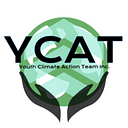Typhoon Rai: The Statistics and a Closer Look
The Statistics
Typhoon Rai, known locally as Typhoon Odette, was the strongest out of the 15 typhoons that have hit the Philippines just this year. The death toll rises every day as aid workers struggle to reach some areas due to fallen debris and flooded roads. There have been more than 400 deaths with 80 still missing and 1,140 injured. Telephone and internet services have also been cut off in these regions, making it hard to contact those in need. Typhoon Rai was a Category 5 storm, initially picking up winds of 260 kilometers (160 miles). Along with strong winds, the typhoon carried heavy rain that caused flooding and landslides. Traveling west, it devastated the areas of Cebu, Bohol and Surigao del Norte Philippines.
Save the Children estimates around 4.1 million children have been affected by the typhoon. The Philippine Department of Social Welfare and Development states that 53,000 houses have been destroyed and 83,000 have been partially damaged.
Typhoon Rai also brings many long-term concerns regarding food insecurity, housing, water borne diseases and education. According to NPR, the Philippines Disaster Risk Reduction and Management Council has lost around $3.2 million in crops, livestock, and machinery. Thousands are now homeless, with more than 16,000 families in Caraga sheltering in small evacuation centers. In an article with CNN, humanitarian manager of Save the Children Jerome Balinton states, “Sanitation is a huge issue at these evacuation centers. With the Philippines still battling Covid-19, we worry for the safety of millions, including the most vulnerable children.” In addition to these factors, the Philippines also saw widespread destruction of schools. Even now, many Filipinos are left grieving for their loved ones, homes, schools and food.
A Closer Look
To learn more about Typhoon Rai, I spoke with Wendy Bugaoisan, a relative who has experienced such disasters. The following are some of the highlights of our conversation.
The Philippines is working very hard to help those in need. What has the Filipino Government been doing to aid citizens? If possible, what are ways it can help more?
The government has provided us with relief goods, financial assistance and building materials. The materials depend on where the typhoon hits the most, but I would say we need more help in terms of medical assistance and recovery — not just the people, but the community as well.
Typhoon Rai has negatively affected the Philippines in many ways. What long-term issues (e.g., education, diseases, finances) are the most concerning for you personally and why?
For me, I am concerned about health and finances. When the typhoon comes, you see a lot of people affected by the floods. There’s no food and everyone has to get shelter. We don’t have enough medical assistance, food and clothing. Many people are scared about getting sick because of how long recovery can take.
How have you and the people around you been dealing with the aftereffects of Typhoon Rai?
You just have to help each other. By giving others relief goods and other basic needs, they can cope while new solutions are found.
If you are comfortable, do you mind sharing any stories or experiences regarding Typhoon Rai?
There’s one thing I cannot personally forget. During the typhoon, there are these rescuers who go to recover bodies from eroded places. A lot of families are buried in the area. There’s this one person I know personally, and he is a very good person. He went there to help recover some casualties and while digging, he wasn’t able to — the place eroded from uphill, and he wasn’t able to run for safety. He got caught … One thing that hurts the most, is that both the rescuer and the person who was supposed to be rescued were close to my family …
A lot of people want to help the Philippines. Youth Climate Action Team Inc. and other organizations have been working hard to spread awareness and raise donations. What are other ways we (younger generations) can help?
I would say, for younger generations like you, it’s a big help. Continue doing what you’re doing. It’s a big help being good role models by giving hope to people who are affected by the climate.
When closing off the interview, Wendy Bugaoisan told me, “It’s okay. These things happen. I get over it and we get over it.” These natural disasters have become normal to some citizens, as they constantly struggle with the long-term effects. In spite of this, the strong people of the Philippines continue to work hard in rebuilding their communities and helping friends and family.
